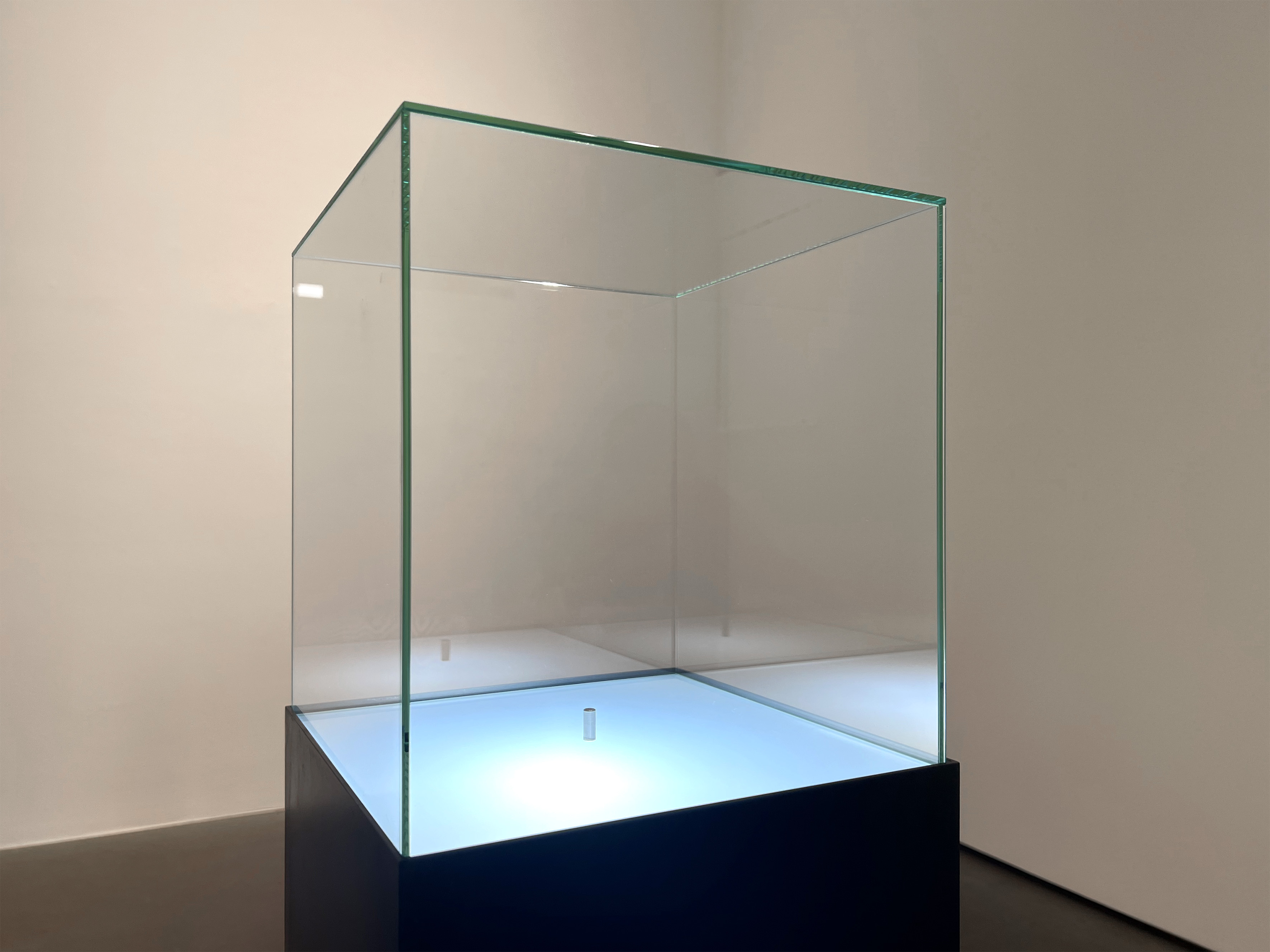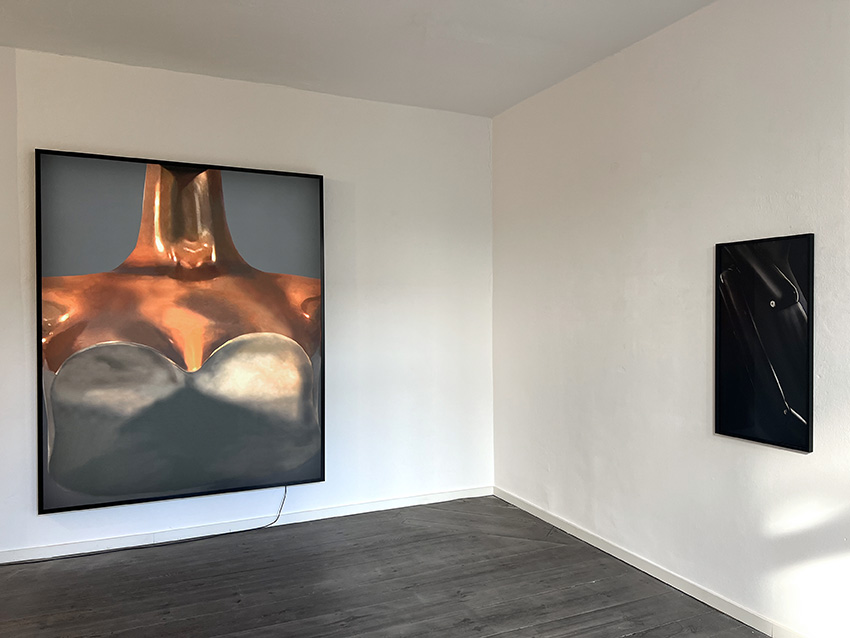Louisa Clement
compression
March 2 - April 15, 2023
Galerie EIGEN + ART Berlin

For example, Clement’s works in the series Insides, which were exhibited in the EIGEN + ART Lab in 2020, are digital photographs produced with her Smartphone from the inside of display window mannequins. The hollow bodies of these figures, which we encounter elsewhere in the artist’s oeuvre as Avatars (2016) or in the series Heads (2014-2015) and Gliedermensch (limb person, 2017), can be interpreted as symbols of the dehumanization of bodies in the face of their serial reproducibility. They convey an aspect of alienation.

This is further developed in the series mould (2014-2015). The casting molds for the production of anthropomorphic sex robots have here become sculpture themselves. As indices and castings, they point to the absent body. They leave behind an uncanny empty space. Mould simultaneously gives transparency to the production process of a new series of Clement’s, Representative (2021). This sculpture is unsure of itself:
“Hello, I am Louisa. I don’t know whether or not I am sculpture […]”
The Representative, whose body is based on that of the artist, becomes an interlocutor on questions of human subjectivity and the understanding of the body and of consciousness – her consciousness is the product of machine learning and artificial intelligence. What ideas are the basis for artificial copies that people make of themselves? And what relationship do people have with these copies?
Today, the development of such an artificial intelligence, the storing of digital photos, and almost every other area of our everyday lives are shaped by the binary code of 0 and 1, the language of computers and digital networks. Clement’s newest work, compression (2023), makes use of a new bio-cybernetic method of storage: DNA data storage. Digital data can be translated from the binary code into the DNA code based on four amino acids. Clement uses this technology to translate her entire oeuvre up to now into a sequence of adenine (A), thymine (T), cytosine (C), and guanine (G). The resulting double helix is preserved in a tiny stainless-steel casing. The body itself can thus become a carrier medium for an enormous amount of data. With this new work, Clement inscribes traces of her artistic production in her own body by having this double helix implanted in it. She incarnates her own work again. What does this technology mean for our corporeality and identity? The body becomes a potential archive, but at the same time also a possible field for further bio-capitalistic exploitation.
Leon Jankowiak